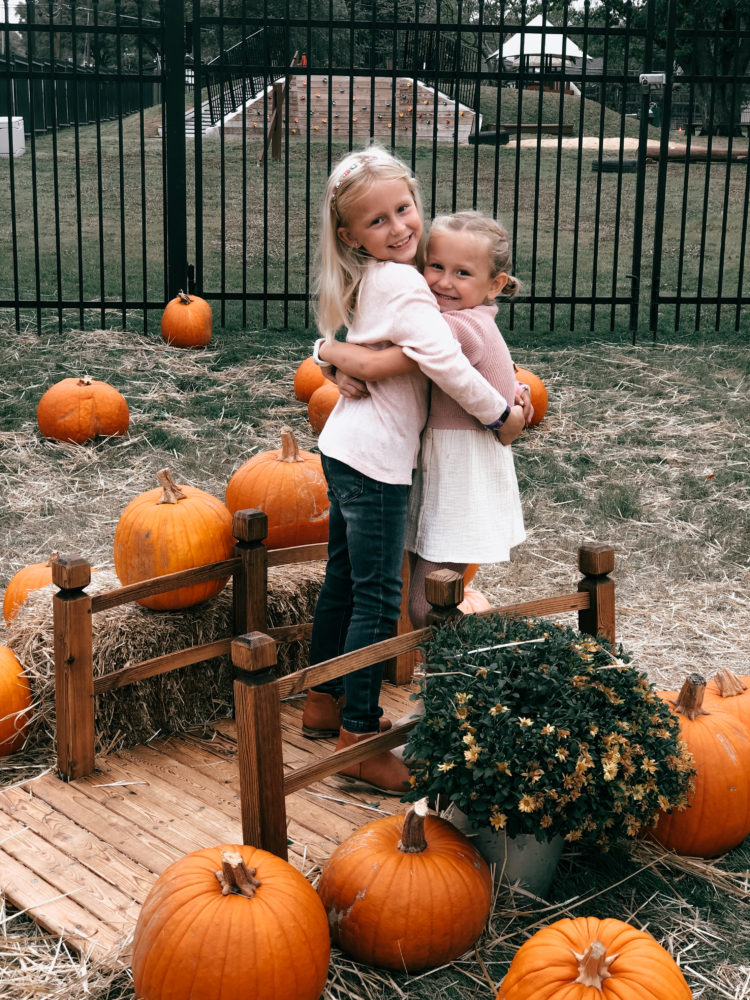.
Do you give your kids room to express their negative feelings?
Since becoming a mom, I’ve started to realize that we praise our kids for being independent, for smiling a lot, for being strong, etc. Sometimes it feels like we’re teaching our girls that they have to be tough or strong if they want to be successful or treated as an equal to boys. Don’t get me wrong, praising girls/kids for the afore mentioned things is not bad. But are we teaching them to handle their negative emotions, too?
I do feel like there seems to be a positive shift in our society with younger generations in regards to leaning into feelings. For example, my parent’s generation never went to counseling while my generation is very pro-counseling. I think we are making a gradual shift to being able to publicly say that it’s okay to not be okay all the time.
But again, my question is, are we giving our kids the tools and opportunities to express all of their emotions? Or, are we just making space, or making the most space, for the positive ones? Are we helping our kids label their emotions? Are we teaching them that it’s just as okay to feel sad or mad as it is to feel happy?

There is no doubt that developmentally there is a lot going on cognitively for young kids. But, I think parents play a massive roll in helping shape how our kids handle and express their emotions.
As a mom of two little girls with big feelings, I want to create a safe space in our home where our girls can express their emotions. I want them to be able to trust us with their emotions. Even more, I want them to feel confident that it’s okay to feel all of their emotions – good or bad.
I want our home environment to be one of open dialogue and trust so that we can truly walk with our girls through anything.

Emma is the oldest child like me and her father, and it often freaks us out a bit to see so much of us in her. She is both a perfectionist and a people pleaser just like her mom. On top of that, she is a Highly Sensitive Child (read this book if you think your child is, too), and she has a high EQ. In other words, she’s got some big feelings. Sometimes those big feelings come right on out, but other times I notice her stuffing them down. It’s the stuffing them down that has started bothering me. I don’t ever want her to feel like she isn’t allowed to feel sad because she needs to hold up a certain image. Or she can’t feel angry because a “good kid” wouldn’t feel angry.
How To Help Kids Express Their Negative Feelings In a Healthy Way
If you’re a This Is Us fan, you’ll recall that Randall and his wife, Beth, do this thing where they allow each other to voice the worst case scenario when they feel fear or out of control. I think this is such a neat way to give voice to your feelings and then allow yourself to move forward. So I adapted this a bit for Emma (and Abby) to be able to voice their feelings, but then move forward without being paralyzed by their fear or negative emotions.
When Negative Feelings Arise:
As most of you know by now, Emma Grace broke her arm 2 weeks ago. After coming home from the hospital, Emma was ordered to lay supine for an entire day. This was also the day she realized she would’t be able to do a lot of her “normal” activities.
Instead of telling Emma all of the activities she wouldn’t be able to do with a cast – swimming, tumbling, soccer, etc., we decided to take each conversation as it came. So, as her first morning home began she gradually started to discover the things she couldn’t do. The morning consisted of a lot of opposing emotions. One minute she was happy and the next she was complaining or crying.
Then during the afternoon we were alone for a bit and I tried something new with her. I knew I needed to encourage her to stay positive, but I also wanted to give her space to feel everything. There was a lot going on in that little head of hers and I could sense it. I wanted her to be able to really feel her emotions and label each one.
So, I set a 2-minute timer.
Our “Two Minute” Rule:
I told Emma she had two minutes. During these 2 minutes, she could say every complaint, every bad feeling, every frustration she felt. Then when the two minutes were up we were going to stop and make a choice. We would choose to have a positive outlook. We would have a positive attitude despite a less than ideal situation, and I would support Emma in that in any way that she needed.
Emma was shocked initially that I asked her to say all the bad things. This further proved to me how important it was for her to do this exercise. I remember she looked at me with the funniest face. It took her a bit to get going, but she did. She was able to name her feelings and to own them.
Emma told me she was angry she couldn’t go to tumbling, she was sad she couldn’t swim (her favorite activity), she felt like she was letting her dad down (he coaches her soccer team), and she was afraid kids would make fun of her. She let out her feelings and she named them.
And then she was able to take responsibility. The time ran out and with that so did her negative feelings and complaints. She was given a safe space to voice her negative feelings and the emotions that felt so real to her. She called each emotion by name. Then, and the coolest part, is she took ownership of her feelings and her future. She decided that sitting in those negative feelings would not lead to a joyful 8 weeks. Instead, she decided to leave her negative feelings behind. She choose to be brave and find the joy amongst the hard.
Now, I know it won’t always be this easy, but I hope to start setting a pattern with my girls.

Why You Want Kids To Be Able to Express Their Negative Feelings:
Moving forward, I plan on using our “two-minute” method with our girls. I want my girls to feel okay with being sad or being angry. I want them to know to be able to recognize the emotions they are feeling. It’s important that they are able to voice those emotions or talk through them in a safe space.
Being a mom of two girls, I so desperately want open communication as they grow up and face new challenges. I know that in order to do that I have to earn their trust. You can bet I plan on doing that!
This probably goes without saying, but while we do teach our girls it is okay to feel all the feels, we also teach discipline. A common phrase in our home is “it’s okay to feel angry or disagree with me, but you still have to obey.” No matter what you’re feeling, actions have consequences – good or bad, and that is important to learn, too.

If You Liked This Post, Check Out These:
How To Parent Your Kids When They Lie To You
The Best Time Management Tips For Moms




